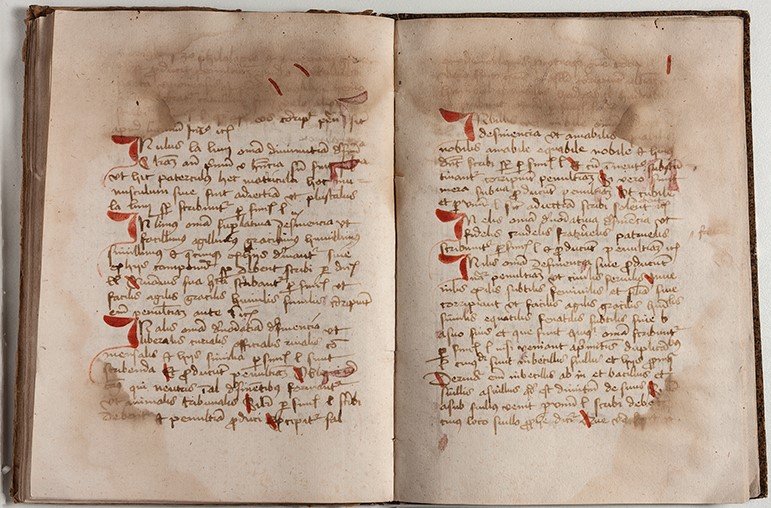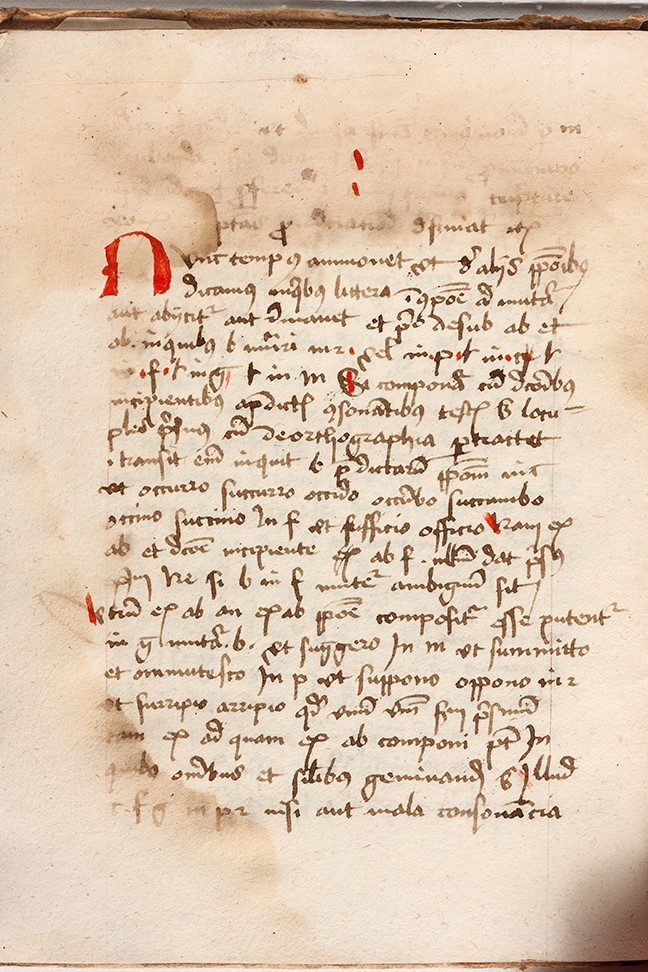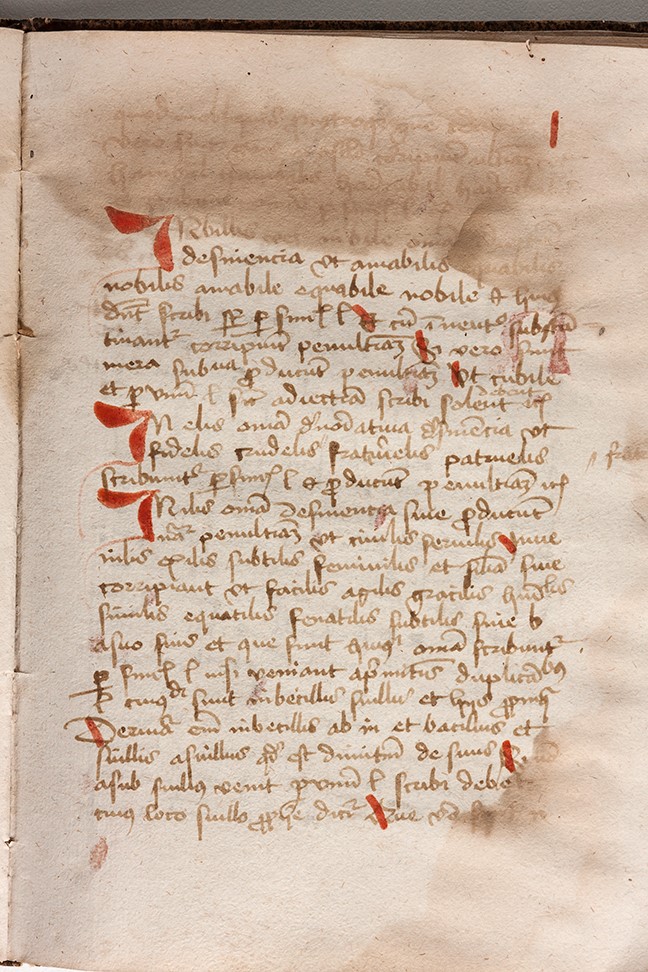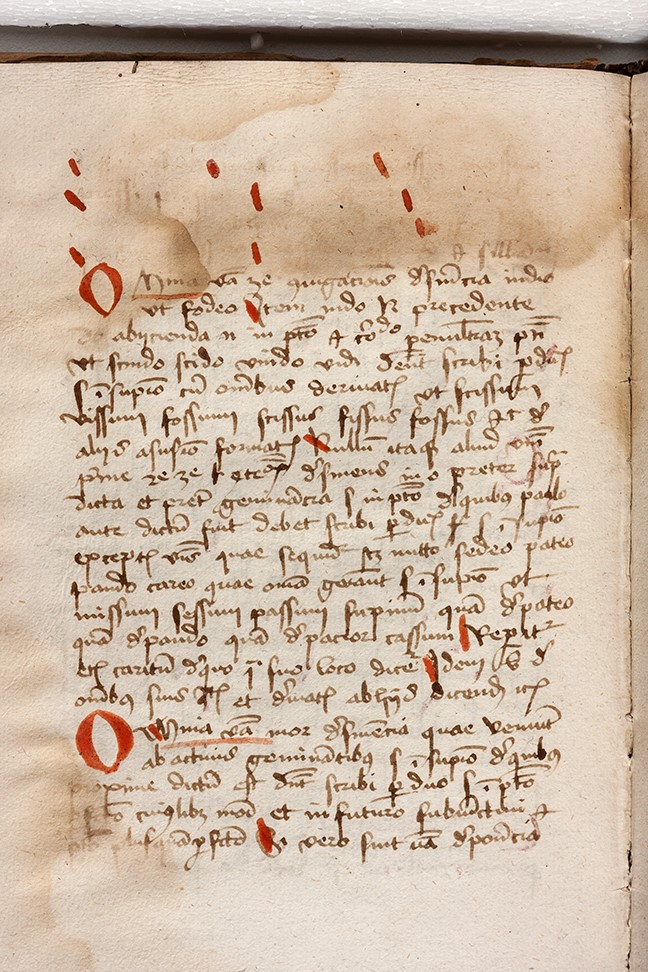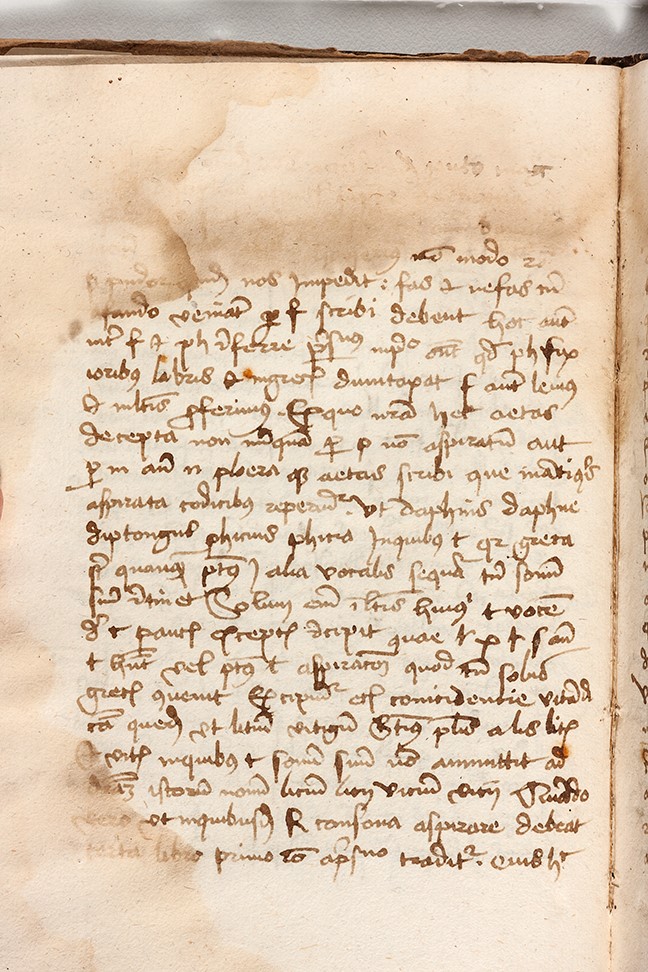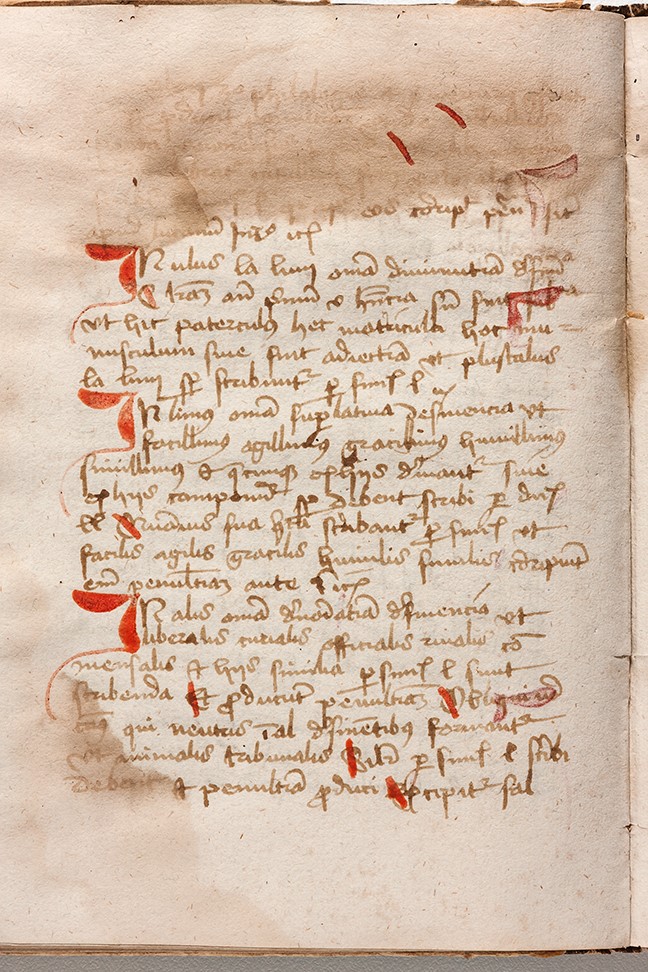Acquisition number: 1978.03
Latin manuscript of Gasparinus Barzizius, Orthographia
Followed by a tract on the Calendar and miscellaneous added pieces, including sample student letters from Heidelberg University
Paper, 48 leaves, apparently complete, gatherings of 12 leaves with traces of catchwords, 20-26 lines, written in brown ink in a German cursive bookhand, some capitals touched in red, some underlining in red, initials in red; badly water-stained in upper and lower margins, seriously affecting text on many leaves.
Brown paper cover (removed in 1978) over 19th-century mottled boards.
Text
The principal work is a grammatical textbook, the Orthographia of Gasparino Barzizza (1360-1431), the Italian teacher of rhetoric. The text was first written in Padua in 1417 at the request of Domenico and Pietro Vettori and was later modified when the author was teaching in Milan. It opens here with the prologue (“Quoniam etcetera scriptura...” f. 2) preceded by a note (f. 1 b) praising the work and noting Priscian and Quintilian among its sources. It concludes with a colophon on f. 43 b.
Folio 44 b. A short tract on the Calendar (opening “Menses sunt xii, scilicet Januarius...”) concluding with the date 1470 (“Ab annis tolle ter denos septem quoque mille et quadringentos...”) and brief calendar tables from 1473 to 1484. Added in a different hand at the end is a group of miscellaneous notes including several copies of student letters (inviting a friend to visit, etc.), one dated 23 February 1474, written “ex heidelbergensi studii bursa nova”, a couplet containing all the letters of the alphabet, and a short fable about the rich man and the rusticus who go to the fair together.
Title: Manuscript of Gasparino Barzizza’s Orthographia, etc. - 1978.03
Acquisition number: 1978.03
Author or editor: J.R. Green
Culture or period: Renaissance.
Date: Late 15th century AD.
Material: Paper
Object type: Writing materials
Dimensions: 121mm (w) × 148mm (h)
Origin region or location: Germany
Origin city: Heidelberg.
Display case or on loan: 6
Keywords: Renaissance, Manuscript, Inscription, Gasparino Barzizza, Cicero, German cursive
Sotheby Parke Bernet (New York), Sale Cat., 14 December 1977, no. 57a; J.R. Green with B. Rawson, Catalogue of Antiquities in the Australian National University, A.N.U. (Canberra, 1981) 124.
1978.03
Manuscript of Gasparino Barzizza’s Orthographia, etc.
Purchased. 148mm. x 121mm.; 48 ff. (last blank); 20-26 lines (some borders ruled); gatherings of 12 (some catchwords); rubricated initials; upper and lower margins badly waterstained. No foliation.
In Latin, on paper, late fifteenth century; German cursive, probably from Heidelberg. Two front fly-leaves, the second with an inscription badly defaced and a note “Sii dü min höchste zu versicht” with the initials “L.M.”.
Binding nineteenth century mottled boards.
ff 1-43 v Orthographia
f 44 blank
ff 44v-47 Calendrical fragment (in different hands), verses, miscellaneous notes, student letters, and a “fabula”, inc. “Ibant ad festivitatem”.
Sewn into the first gathering (ff. 4-5, 6-7) is a draft letter to “Devoto viro domino [changed to ‘fratri’] Michaeli conventuali cenobii zwifaldensis”. (Zwiefalten Benedictine monastery, diocese of Constance.)
Gasparino Barzizza (1360-1431) taught at Pavia, Venice, Padua (where the text was first written, in 1417), and Milan. He was concerned to revive Ciceronian orthography and Latin style.
See in general P. Raebe (ed.), Bücher und Bibliotheken im 17. Jahrhundert in Deutschland (Hamburg 1980).
Sotheby Parke Bernet (New York), Sale Cat., 14 December 1977, no. 57a; J.R. Green with B. Rawson, Catalogue of Antiquities in the Australian National University, A.N.U. (Canberra, 1981) 124.
